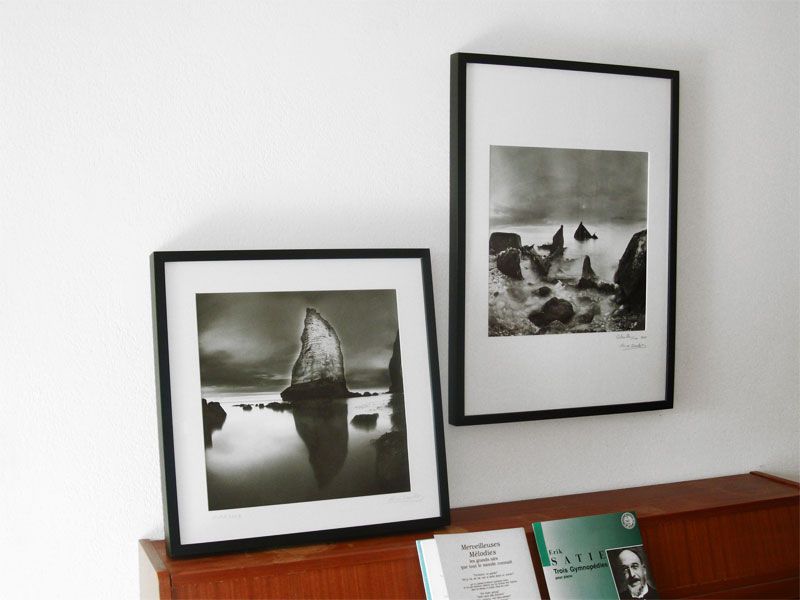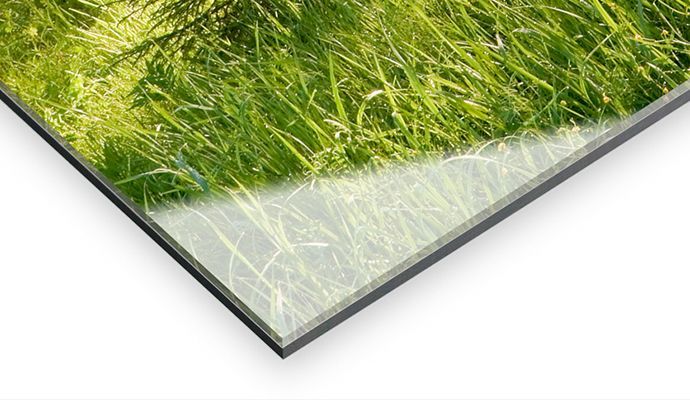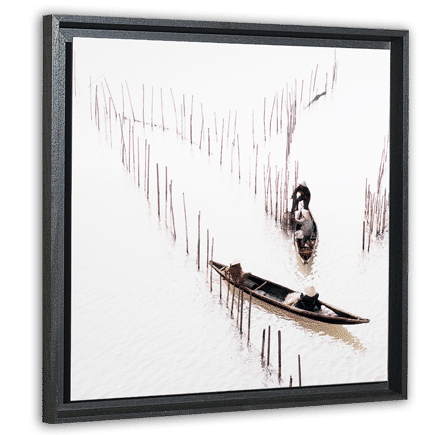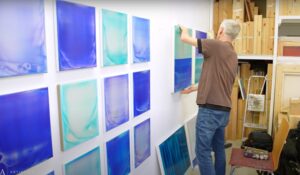
You have just bought a fine art photograph and now you would like a suitable frame? Artistics recommends these three solutions: the classic frame, aluminium mounting and the floater frame. Choose the frame which would best suit and most enhance your artwork.
Classic Frame

This is the type of frame which best protects your artwork from the dust.
There are many standard frames on the market in small and medium format. Take into consideration the furnishing of the room and choose a frame that elegantly enhances your artwork.
A classic frame comes with the following elements:
– Frame (moulding) in wood or aluminium: its width (between 1.5 and 5 cm) will depend on the size of the photograph. As far as colour is concerned, black suits most photographs, but your taste is important as is where the photo will be displayed.
– Mat Board (also called passe-partout) : A piece of cardboard or thick quality paper usually of a clear colour placed between the frame and the photo. This border serves the purpose of keeping the glass or frame off the photo while adding decorative value.
– Backing (also called mounting board) with fixture to attach the photo to wall with a nail, or X Hooks for larger formats.
– Glass or Glazing (sometimes plexiglass) : Plexiglass is normally used on formats exceeding 40 X 50cm to reduce the weight and the risk of breakage during transportation.

For photos that will be hung in front of a natural light source (window, door) or artificial light source (spotlights, ceiling lights, lamps), we recommend anti-reflective glass. The anti-reflective treatment on the glass reduces the reflection of light rendering the glass. A slightly more expensive option but well worthwhile for your artwork.
Aluminium mounting

For aluminium mounting neither a frame nor glass are required. Your fine art photography is mounted onto a rigid backing which is easy to hang.
This process can only be done by professionals (photo laboratory, framers.) The print is attached to a rigid backing: either aluminium (1 – 3mm thick) or alu-Dibond (a type of composite panel.) Along the same lines, there is a finishing called Diasec. In this case the print is set between a layer of acrylic and a layer of substrate (approx. 4mm each,) the transparency of this material gives a sharper, richer finish to your photograph.


To hang the print. You can attach simple hangers to the back of your print or install an aluminium back frame giving a more rigid aspect to the mounting which sits the printout from the wall for a quality finish (the back frame is attached to hooks or nails.)
The floater frame


The floater frame is the most usual choice for art galleries and one which seriously and elegantly enhances your photograph.
The photograph is first fixed to a backing (as described above) which is subsequently placed inside a frame leaving a gap from the top, bottom and side edges so as to give the impression that the work is floating inside the frame.

You choose the material and colour of this type of frame.
To sum up:
For a simple and inexpensive solution choose a classic frame. It will protect your photo perfectly well and it is easy to find a selection of standard formats on the market. Bear in mind the reflection of light on the glass (which could be avoided by either anti-glare or anti-reflective glass. )
If you are thinking about a more contemporary solution go for the aluminium mounting; it is right for every format and remains reasonably priced. The only drawback with this type of framing is that the photo is not protected (unless you opt for Diasec) so you need to be careful while handling the work.
If you are looking for a quality solution close to the one used by galleries and you are prepared to pay a little more, go for the floater frame.
For a perfect finish we recommend the services of a professional framer for this work. Do not hesitate to ask advice from the gallery where you purchase the print, they should be able to recommend a workshop that is convenient for you.
On the same subject:





